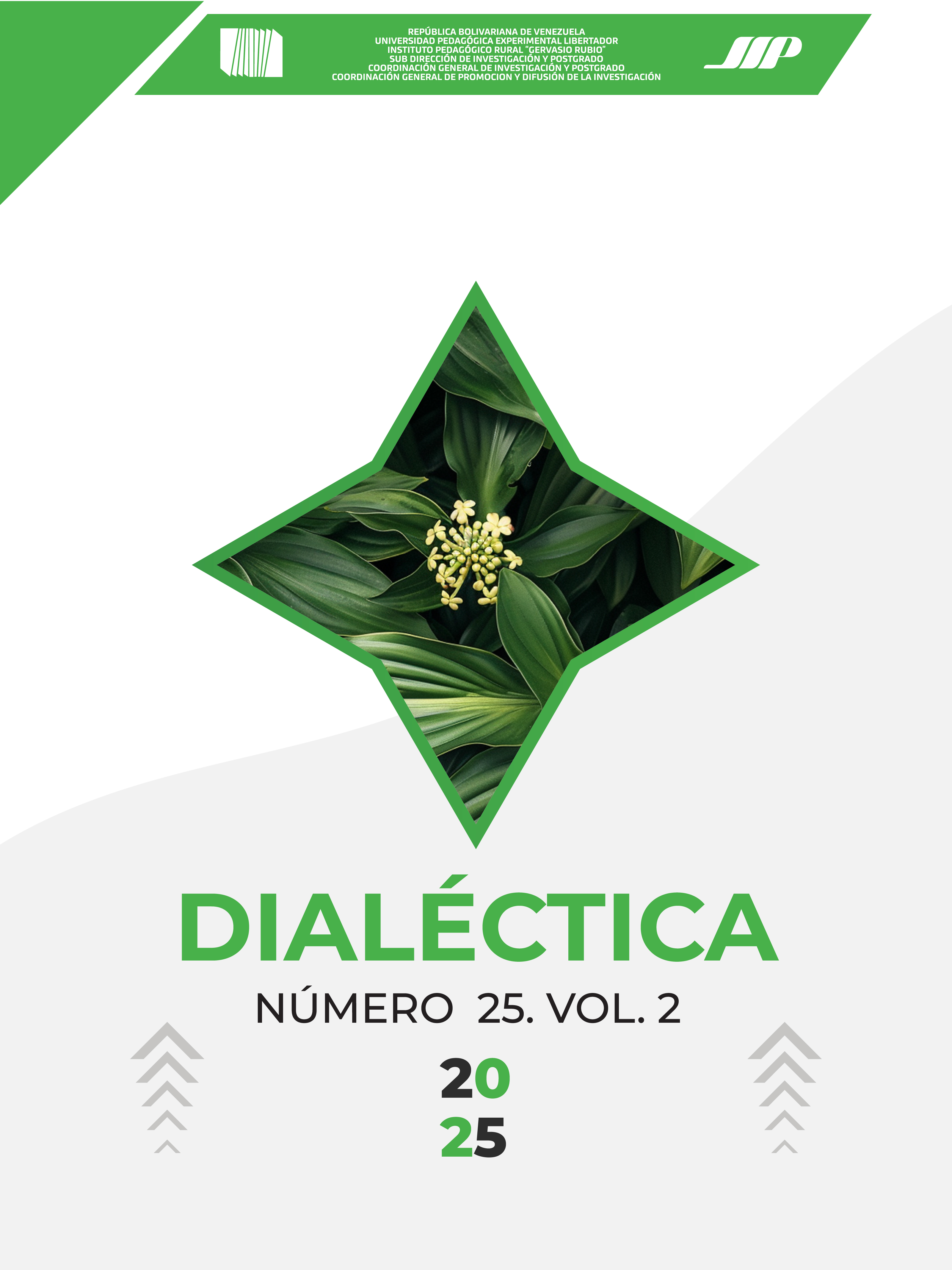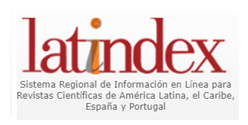REFLECTIONS ON THE TEACHING OF CHEMISTRY IN ETHNOEDUCATION WITH STUDENTS OF THE TICUNA ETHNICITY IN THE COLOMBIAN AMAZON
DOI:
https://doi.org/10.56219/dialctica.v2i25.3997Keywords:
chemistry teaching, ethnoeducation, Ticuna ethnic groupAbstract
Teaching chemistry in ethno-education contexts is a challenge that a teacher who does not belong to an ethnic group takes on. For this reason, this article aims to review a significant pedagogical experience that took place in the Amazon region of Colombia, with technical students from the Ticuna indigenous community, emphasizing those challenges faced by the teacher who Until now he began his practice in pedagogy and that helped him understand that being a teacher is not only transmitting knowledge to a group of young people, but is also immersing himself in the life of each one of them and understanding that there are different rhythms of learning and that what is taught must be really meaningful for the student. This work was developed under the qualitative approach in the form of testimonial narrative review, since it takes into account the experience lived by one of the authors of the article. Initially, the context in which the educational practice was carried out will be made known, highlighting some particular characteristics of both the students and the region; Next, it will be explained how the chemistry teaching process was in an ethno-educational environment and finally, some conclusions will be given focused on the work of the teacher carried out there, as well as the learning that was had about cultural aspects of the Ticuna ethnic group.
Downloads
References
Anzola, Y. y Rodríguez, D. (2022). Puerto Nariño: entre el agua y la tierra. [pregrado, Universidad la gran Colombia]. https://repository.ugc.edu.co/bitstream/handle/11396/7486/Anzola_Yuly_Rodriguez_%20Daniel_2020.pdf?sequence=1&isAllowed=y.
Artunduaga, L. (1997). Una dimensión de trabajo para la educación en comunidades indígenas de Colombia. Revista Iberoamericana de educación, 13, 35-45. https://rieoei.org/RIE/article/view/1136 DOI: https://doi.org/10.35362/rie1301136
Betancour, D. (2014). Capacidad de carga física y real para atractivos turísticos priorizados y vías de acceso en el casco urbano de Puerto Nariño, Amazonas. Turismo y sociedad, 15, 167-186. https://www.redalyc.org/pdf/ 5762/576261185010.pdf DOI: https://doi.org/10.18601/01207555.n15.10
Carod, F. (2012). Curares y timbós, venenos del Amazonas. Neurol, 689-698. de https://pesquisa.bvsalud.org/portal/resource/en;/ibc-109577 DOI: https://doi.org/10.33588/rn.5511.2012343
Castro, Z. (2010). Caracterización del proceso de fermentación del grano de copoazú. (Theobroma grandiflorum Willd. ex spreng). [Especialización Universidad Nacional de Colombia] de https://repositorio.unal.edu.co/bitstream/handle/ unal/70205/107392.2010.pdf?sequence=1
Centeno, A. (1996). La importancia del contexto en la enseñanza de la medicina. Un concepto elusivo y muchas veces olvidado. Revista de la Fundación Facultad de Medicina, 20, 13-16. de https://www.researchgate.net/profile/Angel-Centeno/publication/267423261_La_importancia_del_contexto_en_la_ensenanza_de_la_medicina_Un_concepto_elusivo_y_muchas_veces_olvidado/links/54bce4cc0cf29e0cb04c53b1/La-importancia-del-contexto-en-la-ensenanza-de-l
Constitución política de Colombia. [Const]. (1991). Artículo 7. https://www.registraduria.gov.co/IMG/pdf/constitucio-politica-colombia-1991.pdf
Del Amazonas. Enciclopedia Amazónica en línea. (s.f.). Biodiversidad de la flora del Amazonas. https://delamazonas.com/flora/
Gonzalvez, A. y Marlin, A. (2016). "El contexto, elemento de análisis para enseñar.". Zona próxima 25, 25, 34-48. http://www.scielo.org.co/pdf/zop/n25/n25a04.pdf
zquierdo, M. (2014). Un Nuevo Enfoque De La Enseñanza De La Química: Contextualizar y Modelizar. Anales de la Asociación Química Argentina., 92(4-6), 115-136. http://www.scielo.org.ar/scielo.php?pid=S0365-03752004000200013&script=sci_arttext
López, L., Murillo, J., y Ochoa, F. (2008). Aplicación del enfoque de Cadena de Valor en turismo sostenible para el municipio de Puerto Nariño, Amazonas, como aporte para la certificación de destinos turísticos sostenibles. Turismo en la Amazonia. Entre el desarrollo convencional y las alternativas ambientales amigables, 1(4), 63-84. https://d1wqtxts1xzle7.cloudfront.net/44580600/2008_Turismo _e_imaginarios_en_la_Amazonia_colombiana-libre.pdf?1460257171=&response-content-disposition=inline%3B+filename %3DTurismo_e_imaginarios_en_la_Amazonia_col.pdf&Expires=1717539765&Signature=drcrfYbKd
Márquez, F. (2020). Bioética ambiental en perspectiva, perspectiva latinoamericana. Revista latinoamericana de bioética, 20(2), 55-73. http://www.scielo.org.co/pdf/rlb/v20n2/2462-859X-rlb-20-02-55.pdf DOI: https://doi.org/10.18359/rlbi.4910
Mejía, O. (2012). De la evaluación tradicional a una nueva evaluación basada en competencias. Revista Electrónica Educare-, 16(1), 27-46. https://www.revistas.una.ac.cr/index.php/EDUCARE/article/view/3737 DOI: https://doi.org/10.15359/ree.16-1.3
Ministerio de Ambiente y Desarrollo Sostenible. (2008). LEY 1252 DE 2008. https://www.minambiente.gov.co/wp-content/uploads/2021/06/ley-1252-2008.pdf
Ministerio de Educación Nacional [MEN]. (1994). Ley 115 de 1994. https://www.mineducacion.gov.co/1621/articles-85384_archivo_pdf.pdf
Ochoa , G., Wood, A., y Zárate, C. (2006). Paisaje de Puerto Nariño, La selva, el río la gente. https://ilsa.org.co/wp-content/uploads/2022/10/taq13-02.pdf
Ochoa, G. (2001). El municipio amazónico desde un análisis ambiental de flujos de materia, caso Puerto Nariño Amazonas Colombia. [Maestría, Universidad Nacional de Colombia, cede Manizales] https://repositorio.unal.edu.co/bitstream/handle/unal/2672/germanignacioochoazuluaga.2001.pdf?sequence=1&isAllowed=y
Pérgola , M. y Galagovsky, L. (2020). Enseñanza en contexto: la importancia de revelar obstáculos implícitos en docentes. Enseñanza de las Ciencias, 38(2), 45-64. https://ddd.uab.cat/record/224315 DOI: https://doi.org/10.5565/rev/ensciencias.2822
Visión Amazonía. (18 de junio 2021). La chagra: un espacio de integración y aprendizaje cultural para las comunidades indígenas. https://visionamazonia.minambiente.gov.co/news/la-chagra-un-espacio-de-integracion-y-aprendizaje-cultural-para-las-comunidades-indigenas/
Reyes, D. y García, Y. (2014). Desarrollo de habilidades científicas en la formación inicial de profesores de ciencias y matemática. Educación y educadores,, 17(2), 271-285. http://www.scielo.org.co/scielo.php?pid=S0123-12942014000200004& script=sci_arttext DOI: https://doi.org/10.5294/edu.2014.17.2.4
Talanquer, V. (2015). La importancia de la evaluación formativa. Educación química, 26(3), 177-179. Obtenido de https://www.scielo.org.mx/pdf/eq/v26n3/0187-893X-eq-26-03-00177.pdf DOI: https://doi.org/10.1016/j.eq.2015.05.001
Universidad Nacional de Colombia, Departamento de Antropología. (2020). Estudios etnográficos sobre pueblos amazónicos. Obtenido de https://repositorio.unal.edu.co/bitstream/handle/unal/9297/juanalvaroecheverri.2009.pdf?sequence=1&isAllowed=y
Downloads
Published
How to Cite
Issue
Section
License

This work is licensed under a Creative Commons Attribution-NonCommercial-ShareAlike 4.0 International License.
La revista Dialéctica conserva los derechos patrimoniales (copyright) de las obras publicadas, que favorece y permite la reutilización de los mismos bajo la licencia Creative Commons Atribución-NoComercial-CompartirIgual 4.0 , por lo cual se pueden copiar, usar, difundir, transmitir y exponer públicamente, siempre que se cite la autoría y fuente original de su publicación (revista, editorial, URL y DOI de la obra), no se usen para fines comerciales u onerosos y se mencione la existencia y especificaciones de esta licencia de uso. Si remezcla, transforma o crea a partir del material, debe distribuir su contribución bajo la misma licencia del original.











